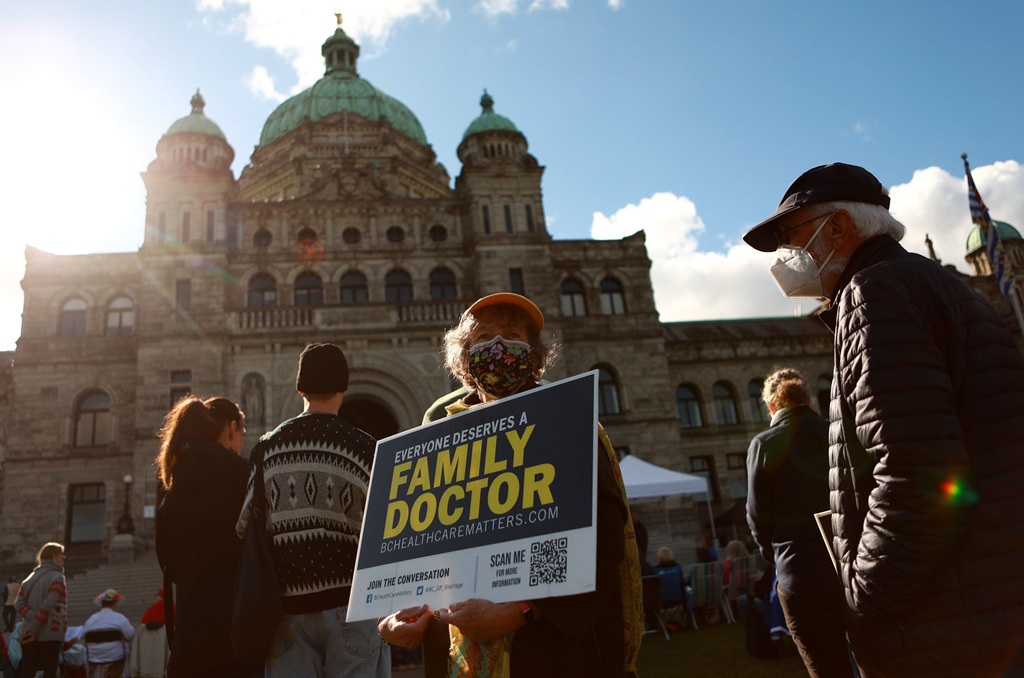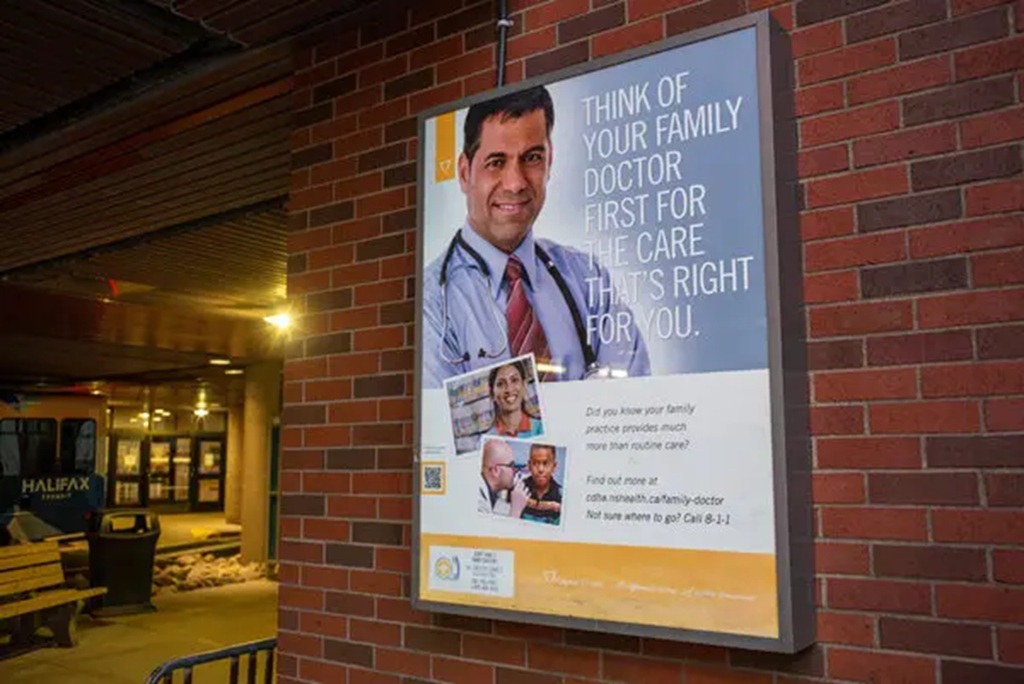Canada is facing its most severe physician shortage in history, with over 6.5 million adults currently lacking access to a family doctor. Demand for care now far outpaces the supply of qualified doctors, leaving millions at risk of longer wait times, reduced services, and overcrowded emergency departments.
The deficit extends from major cities to rural and remote regions, fueling deep healthcare disparities and patient hardship nationwide.
Recent data projects a shortfall of up to 44,000 doctors by 2028, with family physicians accounting for nearly three-quarters of this gap. An ageing workforce, rising population needs, and limited medical training capacity have created a perfect storm.
Every Canadian feels the impact, whether searching for a primary care provider or waiting hours in an emergency room. The crisis demands immediate attention, innovative solutions, and strong leadership to restore and sustain access to quality care for all.
Understanding the Scale and Roots of Canada’s Doctor Shortage
Canada’s physician shortage is widespread and deepening, shaped by both longstanding system barriers and recent pressures on health care. Beyond headline numbers, the situation is even more severe for specific regions and groups.
Addressing these gaps means recognising the impact of policy choices, medical training logjams, and the often-overlooked potential of internationally trained doctors.
Current Numbers and Regional Inequities
The latest data show over 6.5 million Canadians are without a family doctor. This shortage is not evenly spread; some provinces and territories bear a much heavier burden. For example, more than 55% of people in Canada’s northern territories lack a family physician, compared to about 21.5% in Quebec and 17.7% in British Columbia.
Ontario, with the largest population, also struggles to close wide gaps, leaving cities and remote regions facing long waits or no primary care at all. These disparities threaten the principle of universal, accessible care.
Rural and remote communities are hit hardest. Residents may travel hours for basic care, or visit overcrowded emergency rooms for needs that a local family doctor could address. In contrast, major cities often attract more physicians, but even urban centres are not immune.
Nearly 30% of family doctors now work outside routine primary care, choosing hospital, urgent care, or specialised settings, which leaves fewer available for ongoing patient care. This national patchwork leaves millions at risk and makes regional solutions essential. For a detailed breakdown of which provinces and communities face the largest primary care gaps, see this analysis on Canada’s family physician shortage.
Medical Education and Residency Bottlenecks
The pipeline for training new doctors in Canada is too narrow to meet today’s needs. Medical school seats remain extremely limited, with far more qualified applicants than spots. While new schools and expansions are underway, progress cannot keep up with retirements and a growing, ageing population.
Even after medical school, graduates must secure a residency—a paid, hands-on training position required for full licensure. Unfortunately, the number of residency placements has not increased in step with medical graduates.
This bottleneck creates real problems. Qualified Canadian graduates sometimes leave the country, searching for better opportunities abroad. Policy choices over decades contributed to this, such as earlier restrictions on medical school growth and residency funding designed to manage physician numbers for cost control.
These decisions, meant to avoid surpluses, now limit the system’s ability to respond quickly in a crisis. Persistent misalignment between medical education and health needs means thousands ready to serve are left waiting. The Canadian Medical Association summarises these training challenges in “What are the challenges to becoming a doctor?”—a must-read for context on how system bottlenecks slow the entry of new physicians (source).
Barriers Facing Internationally Trained Doctors
Canada brings in thousands of highly skilled immigrants each year, many with medical training from respected universities overseas. Yet licensing bodies and regulatory hurdles make it hard for internationally trained physicians (ITPs) to practice here. Newcomers face repeated assessments, exams, and a complex web of paperwork—even if they have worked for years as doctors elsewhere.
A major roadblock is the shortage of residency positions set aside for ITPS. Without these, even fully qualified international doctors often work as assistants, conduct research, or leave medicine entirely. This under-utilisation represents a lost opportunity, especially in a time of desperate need.
If existing barriers were lowered and supports expanded, many suggest that experienced ITPS could help relieve shortages in family medicine, rural care, and specialist roles. More on how these barriers slow physician entry and their impact on care can be found in the recent article, “Canada has a doctor shortage, but thousands of foreign-trained doctors can’t get residencies”.
Rethinking credential recognition and support for internationally trained doctors could unlock a vital resource in easing shortages. The evidence is clear: the path to a stronger health system depends on using every available skilled hand.
How the Doctor Shortage Impacts Healthcare Delivery in Canada
Canada’s doctor shortage now reshapes the daily experience of care for patients across the country. Shortfalls in staffing and strained resources create real barriers—delayed appointments, crowded emergency rooms, and missed chances for early treatment. The consequences reach every part of the health system and compound existing inequities, especially for people who already face barriers to care.
Access, Wait Times, and Health Outcomes
When fewer doctors are available, basic care slips out of reach. Canadians report finding it harder each year to get a family physician. According to an international survey, access to a primary care provider dropped from 93% in 2016 to just 86% by 2023, leaving millions without reliable medical support.
This decline places more pressure on urgent care and emergency departments, which were already stretched thin (source).
The effects go well beyond inconvenience. Long waits for both primary and specialist care have become the norm. The national median wait time for speciality referrals now sits at 78 days, but one in four patients waits 175 days or longer (study). Mental health services are also delayed, causing preventable deterioration in conditions like depression or anxiety.
These delays hit hard:
- Allowing treatable illnesses to worsen.
- Increasing stress and anxiety for patients and their families.
- Forcing people to use emergency rooms for routine issues.
- Delaying diagnoses for serious problems such as cancer or heart disease.
Vulnerable groups—seniors, people with chronic illness, low-income families, rural communities—feel the impact even more. Their lack of timely access can lead to missed medications, lost work, and avoidable complications. Missed follow-ups or gaps in ongoing care break trust and lower the odds of a healthy recovery.
The evidence is clear: long wait times directly harm population health in Canada (reference). Faster, more consistent access remains critical for preventing disease and catching problems early.
Workload, Burnout, and Specialist Strain
Every doctor shortage increases the workload on those left behind. Physicians and nurses must juggle larger patient rosters, extended hours, and more paperwork. Many report feeling stretched to the breaking point, with burnout rates climbing after the pandemic. Closures, reduced hours, and early retirements further deepen the cycle (study).
This outsized demand has several effects:
- Reduced time per patient: Doctors must rush through appointments, limiting their ability to give thorough assessments.
- Delayed referrals: Fewer family doctors mean longer waits to see specialists, as bottlenecks form throughout the system.
- Team strain: Nurses, physician assistants, and allied staff take on more responsibilities. Their own risk of burnout rises as they try to fill gaps.
- Specialist overload: When family practice faces shortfalls, workloads shift to hospitalists, ER staff, or urgent care clinics. Specialists deal with issues that could be managed in the community, leading to overflow and more wait lists.
Quality of care suffers as empathy and attention fade under pressure. Burnout leads to mistakes, lower morale, and—for some—deciding to reduce or leave practice altogether. Communities lose trusted caregivers, and patients bear the brunt.
The ripples widen further: each unfilled family doctor position means more demand elsewhere up the chain. Hospital beds fill with patients lacking primary caregivers. Mental health professionals report rising caseloads. The system, already under stress, teeters closer to gridlock as professionals are spread thinner.
Even attempts to innovate—by expanding the role of nurse practitioners, pharmacists, or telehealth—cannot fully replace the stability and continuity provided by a consistent doctor-patient relationship. A strong foundation of family medicine lets every other part of the health system function. Without it, cracks widen, and outcomes suffer.
Recent analysis shines a light on these pressure points and urgent needs to support health professionals (read more). As Canada faces this serious shortage, ensuring the well-being of both patients and staff must be the priority.
Key Strategies and Policy Solutions Moving Forward
Canada’s response to the doctor shortage must be bold, sustained, and focused on tangible results. Multiple reports, government proposals, and frontline voices have called for accelerated change across medical training, licensing, and care delivery. This section covers leading strategies under consideration and offers clear direction for policy and practice.
Education Expansion and Domestic Training
Expanding the physician pipeline begins in Canada’s medical schools and residency programs. Provincial governments and universities are moving to increase admissions, especially in family medicine, which faces the most severe shortages.
For instance, Ontario is launching two new medical schools and opening more seats at existing programs, targeting underserved regions and committing resources where the need is greatest (Ontario medical school expansion).
Practical solutions to expand and modernise domestic training include:
- Increasing medical school seats: Provinces are raising enrollment caps to accommodate more qualified applicants, particularly in family medicine and general practice.
- Adding residency positions: More graduates need placements, requiring better alignment between undergraduate and post-graduate training.
- Expanding distributed education: Programs based in rural or remote communities can build a local workforce and encourage graduates to stay.
- Forging regional partnerships: Partnerships between medical schools, local hospitals, and clinics are helping tailor curricula and rotations to address specific gaps in rural and northern areas (Distributed medical education in Canada).
Addressing education and training needs not only boosts numbers but helps bridge the gap between urban and rural care, ensuring both workforce and community needs are met.
Streamlining Pathways for International Medical Graduates
International medical graduates (IMGS) represent a critical, yet underused, source of talent. Canada has advanced several strategies and pilots to recognise qualifications faster and match trained physicians with regions in need.
Current directions include:
- Faster, competency-based assessments: Some provinces are piloting practice-ready assessment programs, evaluating clinical skills directly and cutting redundant steps.
- Dedicated licensing pathways: Flexible licensing strategies, such as provisional or associate physician categories, allow IMGS to work under supervision while completing Canadian requirements (IMG registration and licensing).
- Targeted residency streams: More residency places and Category B streams are set aside for international graduates, with a specific focus on areas like family medicine (Pathways for IMGS).
- Support for settlement and retention: Wraparound services, like mentorship programs or relocation grants, help IMGS adjust and stay in Canada’s healthcare system.
Policy changes in this area require balancing patient safety and quality with open, fair recognition of talent. Canada’s licensing bodies continue to adjust routes to licensure, particularly as the shortage grows sharper (Pathways to licensure).
Innovative Models for Care and Workforce Retention
Solving the doctor shortage demands new ways of delivering care and supporting health professionals to stay in practice. Evidence from across the country points to the power of interdisciplinary teams, technology, and targeted incentives.
Key developments include:
- Expanding the role of nurse practitioners and physician assistants: These professionals can perform many primary care functions, easing pressure on doctors and improving patient access.
- Telemedicine and virtual care: Especially in remote or isolated communities, virtual care tools bring physicians and patients together more efficiently, reducing the need for costly travel.
- Loan forgiveness and tuition incentives: Financial measures for graduates who commit to work in underserved regions improve recruitment and long-term retention.
- Flexible work models: Part-time schedules, collaboration in group practices, and administrative support help prevent burnout and attrition.
Ontario’s “Learn and Stay” grants, for instance, provide full tuition coverage for students who agree to serve in areas facing the steepest shortages (Ontario expanding tuition incentives). Elsewhere, interdisciplinary clinics are showing results for patient satisfaction and workforce stability.
Modernizing Canada’s care delivery models widens the team beyond physicians, makes the best use of skills across disciplines, and helps health professionals stay in the communities that need them most.
With reform efforts underway—from regulatory updates to educational expansion and new models of care—Canada is taking important steps to address its doctor shortage. Continued action and oversight will shape whether these strategies deliver lasting, equitable results.
Canada’s doctor shortage has grown into a national emergency, with millions left without access to basic care. Every province, education provider, and policymaker must act together to close training gaps, remove barriers for qualified international doctors, and bring proven solutions into every community.
Expanding medical seats, modernising licensing, and adopting team-based models will help stabilise the system. Continued effort and accountability are needed to turn today’s crisis into lasting progress.













